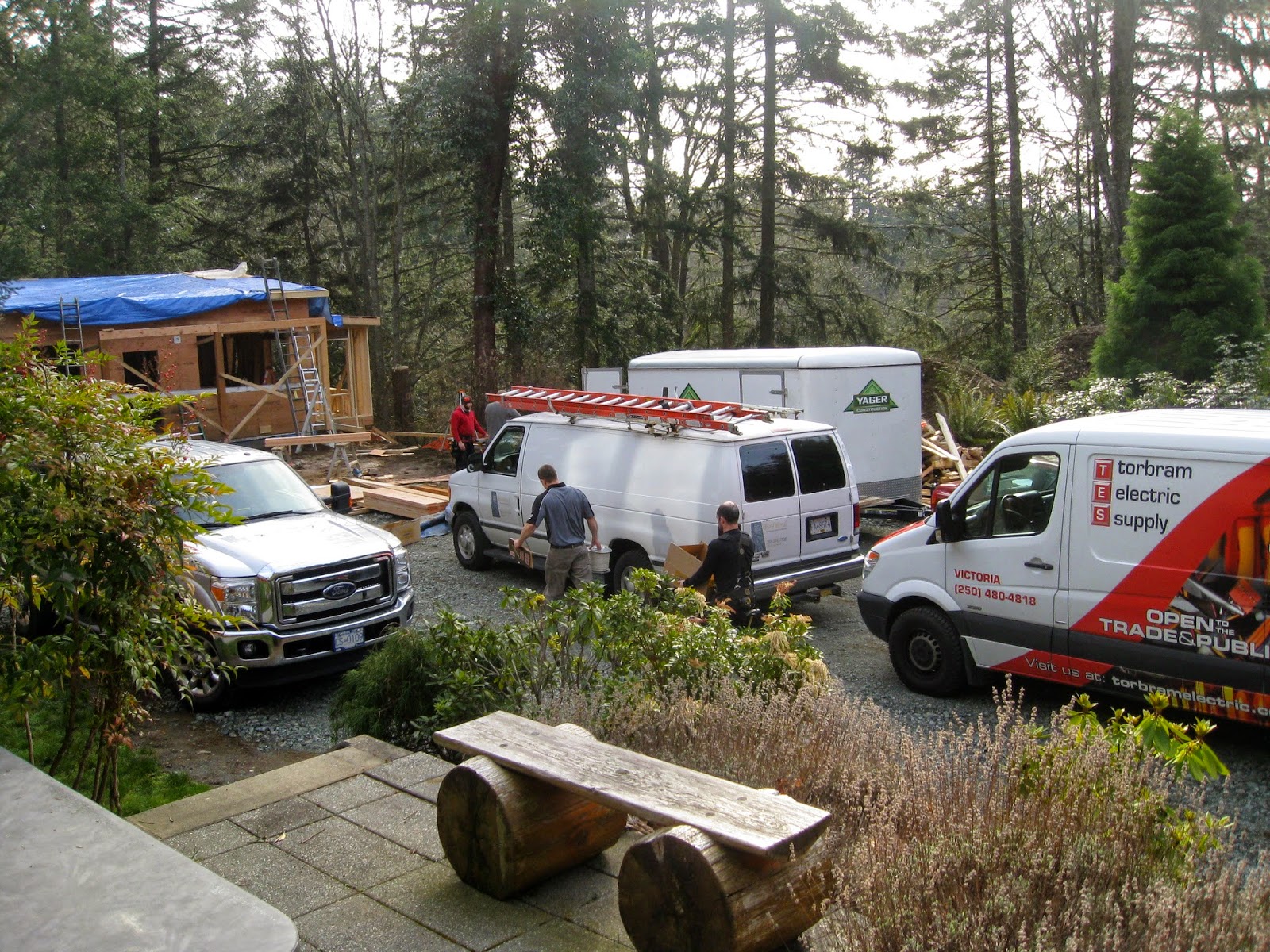Rough sketches for the Lower Patio.
I am working on designs for the lower patio area where a broken down hot tub was removed. It is the most sheltered and sunniest place on the lot and I want to take advantage of the site conditions to grow plants.
I laid out some stakes to work out the optimum size of the raised beds. I placed a chair to help me visualise sitting in the warm spot amongst the flowers.
Pattern Language #241 is a 2-star pattern meaning it is a very important design consideration.
Problem: Where outdoor seats are set down without regard for view and climate, they will almost certainly be useless.
Solutions for locating outdoor seats, sitting walls, stair seats, garden seats need these characteristics:
1. Benches facing directly onto pedestrian activity.
2. Benches open to the south for sun exposure during winter months.
3. A wall on those sides where the winter winds come down. p. 1120
My design satisfies the first 2 characteristics being south facing and elevated to look down over the activity in the backyard. I am hoping the lower seating level and the raised beds full of plants will protect the area from the winds the site gets from Elk Lake about a kilometer away. Experience has shown the winds tend to be deflected up over the house as the land rises and I think the arbour and pergola will also serve to deflect the wind.
In the meantime, I can begin soil building.
The first step is to remove all of the big rocks in the soil.
I am sorting the rocks into rounded river rock that was brought onto the site by the previous owners and the native blasted rock most of which was created before the house foundations were built.
These different types of rock will be used for different purposes elsewhere on the site.
Choosing good spots for outdoor seats is far more important than building any fancy benches. Indeed, if the spot is right, the most simple kind of seat is perfect. p. 1120.


















































